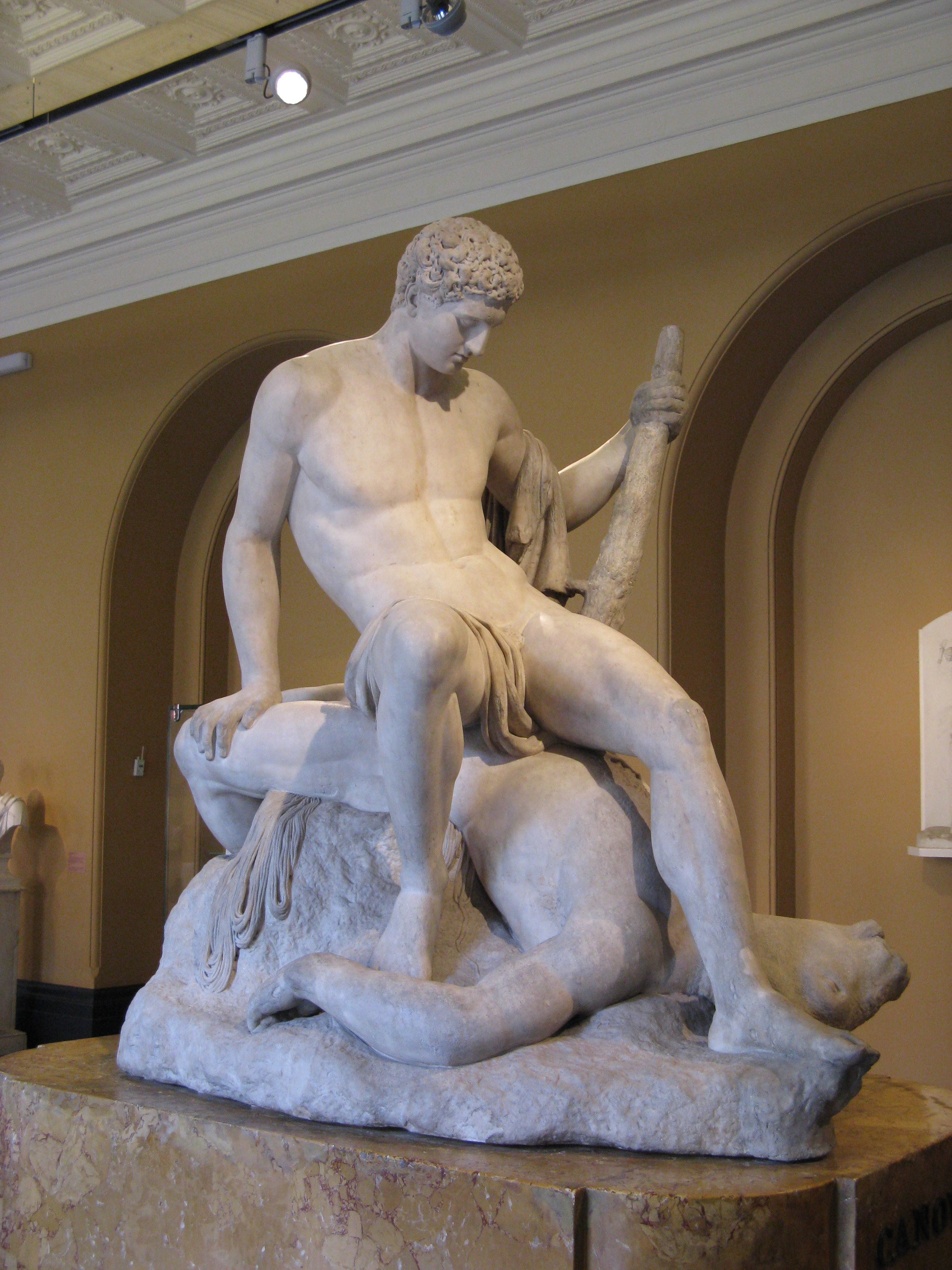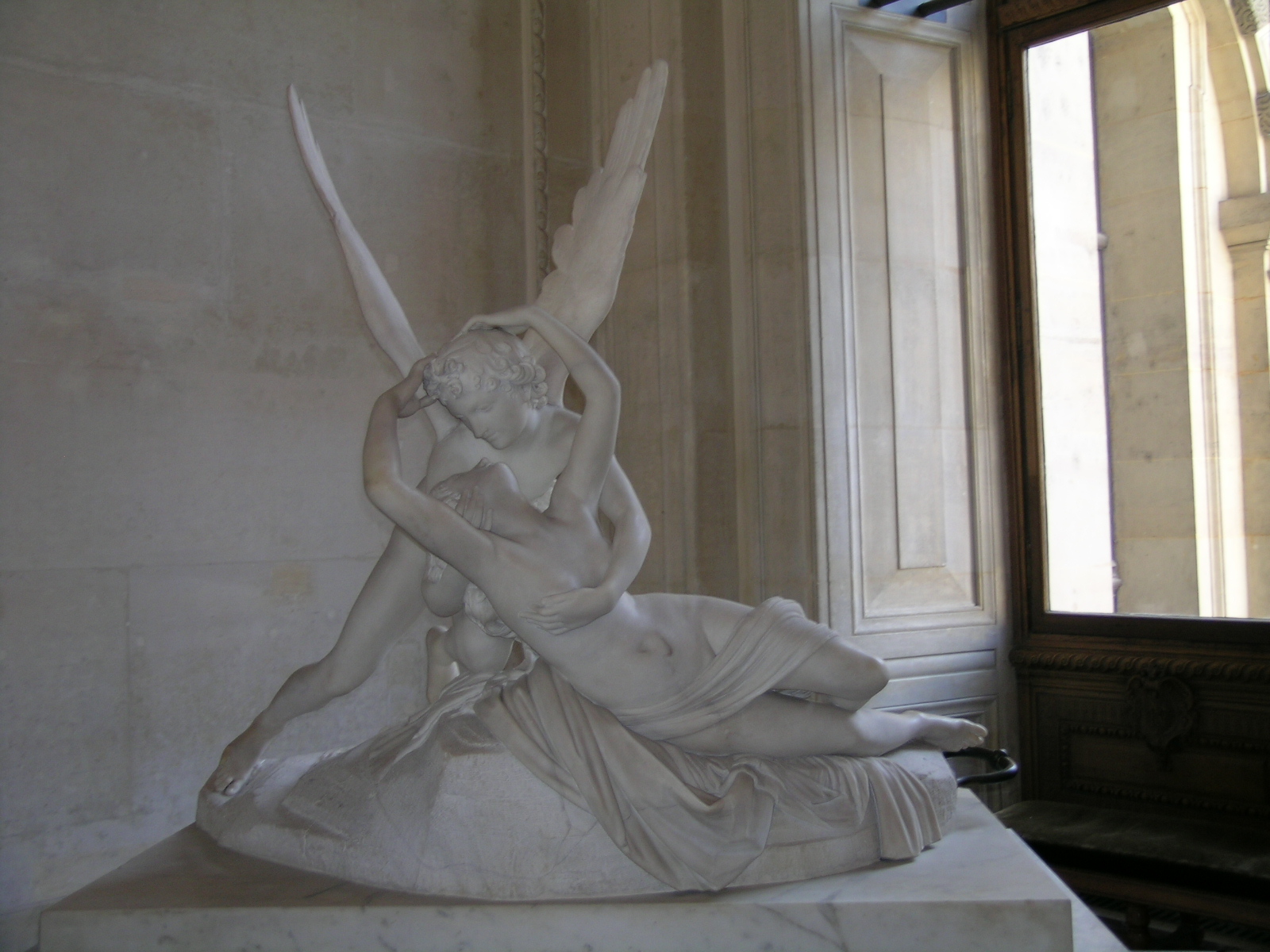Canova
| General Informations | |
|---|---|
| Name | Antonio Canova |
| Birth | 1 November, 1757 |
| Death | 13 October, 1822 |
| Movements | Neoclassicism |
| Music | Dmitri Shostakovich (25 September 1906 - 9 August 1975) - Piano Concerto in F |
Antonio Canova is worldwide regarded as the greatest neoclassical sculptor ever seen in the world. He was born in a small town near Venice, where the young Antonio began his artistic studies.
His father was of stone-cutter and also the first teacher of Canova, who was initiated to drawing after the very first years of his life.
At the age of 22 he moved to Rome and entered the "French Nude Academy" where he started to elaborate his ideal style of beauty. Style that will make him famous all over the world: the Hapsburg, Napoleon and the Pope where just some of the important noblemen of the era who asked for his works.
Anyway, he never took part to the political matters around him: in his opinion, art belonged to an higher, autonomous dimension, where the miseries of life were purified and elevated. No need to get involved in politics. Grace is the 'sense of life', and it can only be reached through art.
But grace is not the result of the frivolous aesthetic pleaseure given by Rococo art: it's sensuality and harmony altogether, passion controlled by reason. That's why Canova made an extent use of white marble: white and pure as the rational ideas, but at the same time soft and sensual as vivid flesh.
Aesthetically, his lines are clear and delicate.
Emotionally, his sculptures ooze disruptive passion, sufference, love.
All the surprising excesses of Baroque, all the reliogious meanings of the Medio-Evo have disappeared.
It's just an impressive emotive force contained inside aesthetic perfection.
A quote from the artist
I have read that the ancients, when they had produced a sound, used to modulate it, heightening and lowering its pitch without departing from the rules of harmony. So must the artist do in working at the nude. (Antonio Canova)
A few words about the music
This is the II movement of Shostakovich's "Piano Concerto n.2 in F, op. 102". The author is one of the most important composers of the 20th century and, even if very distant from Canova cronologically, these two great artists have, stilistically, many similarities.
Shostakovich mastered and wrote in a wide variety of genres (including the neoclassicism so much loved by Canova) but rarely left the road of tonality. It was quite weird, for a 20th century composer, to make such an extent use of tonal music, in opposition to the atonal tendencies that were developing in those years.
We may compare tonal music to the immediate, simple beauty of Canova's works: the sense of balance, harmony and clarity in both authors, given by the classical-like flow of marble lines (or notes), can immediately recall the aesthetic standards of beauty and perfection in a person's mind. That won't easly happen with a more contemporary art work: see, for example, Pollock's painting or - for what's concerning music - Berio's compositions.
Selected works
Theseus and the Minotaur (1781-1783) - Victoria and Albert Museum, London
In celebrating the fight between Theseus and the Minotaur, Canova decides not to represent the middle of the battle, the highest moment of tension, because that would have led to the expression of an excessive amount of violent tensions and passions. Instead, he chose the moment immediately following Theseus' victory, with the hero sitting on the Minotaur. The agitation of the fight is over and the hero, embodying the classical ideals of strenght and beauty, is still meditating on the heroic act that he just realized.
The calm and rational curves of the marble enclose, once again, strong interior upheavals.

Amor and Psyche (or Psyche Revived by the Kiss of Love) (1787-1793) Louvre, Paris
This is probably Canova's most famous and beloved masterpiece, representing the tale of Amor (Amour, Cupid) and Psyche. The original story by Apuleius focused on many erotic moments between the two lovers, but Canova, sticking to his stylistic ideas, decided to represent an instant of incredible sweetness and subtle sensuality. The scene is sober, with the two lovers hardly touching each other, but expressing such a deep, inner love that probably no words, or notes, could ever describe.

Hercules and Lica (1795-1815) Louvre, Paris





